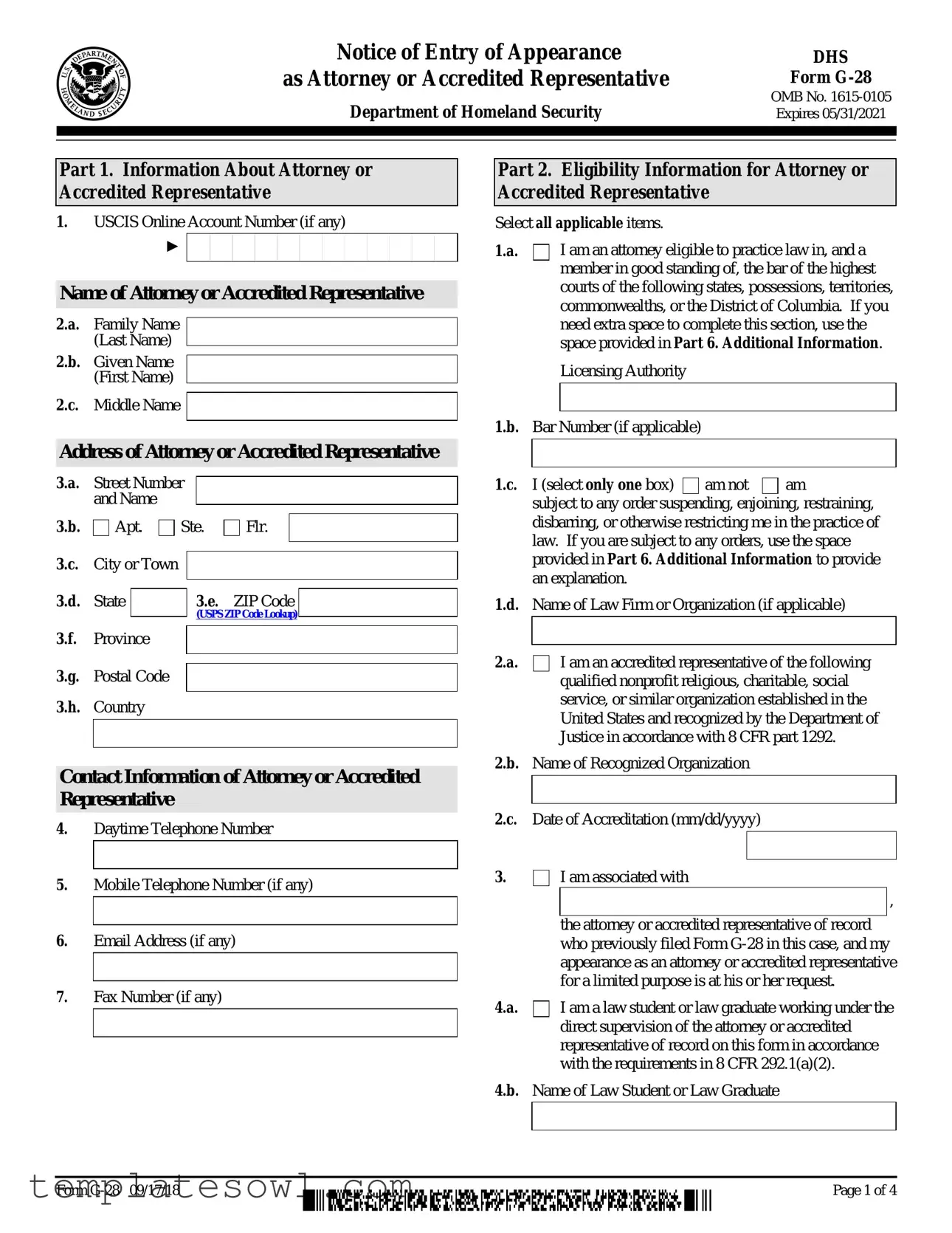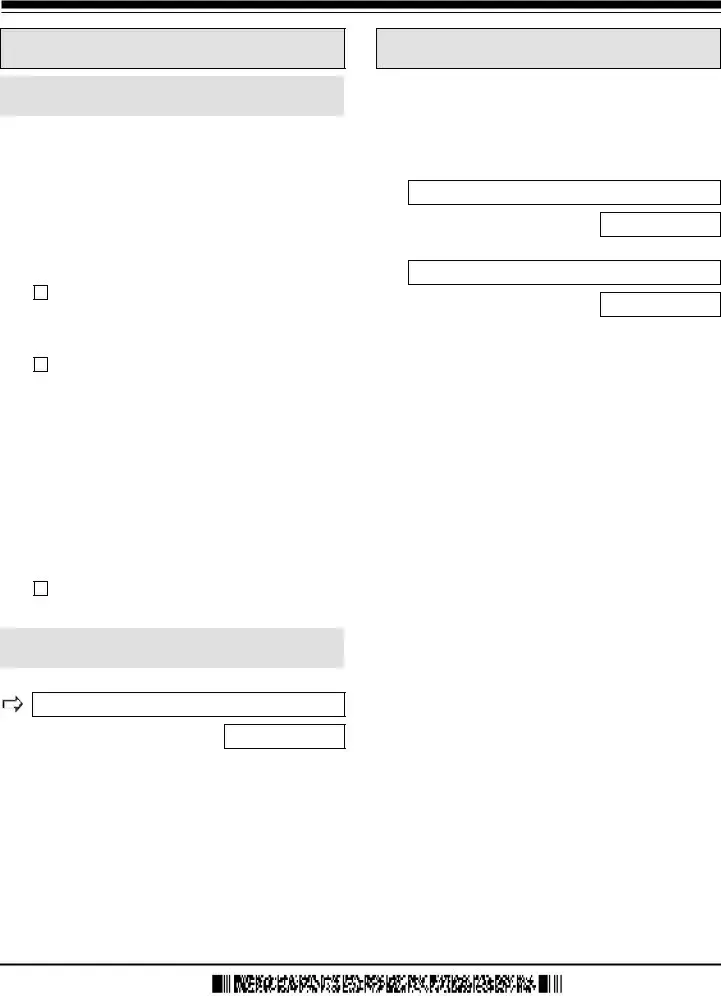What is Form G-28?
Form G-28 is titled "Notice of Entry of Appearance as Attorney or Accredited Representative." It is used by attorneys or accredited representatives to formally notify U.S. Citizenship and Immigration Services (USCIS) or other Department of Homeland Security (DHS) agencies that they will be representing a client in immigration-related matters. This form maintains clear communication between the parties involved in immigration cases.
Who can use Form G-28?
Attorneys who are members in good standing of a bar association, or accredited representatives of recognized organizations can use this form. Additionally, law students or graduates under supervision may also file this form. Each representative must meet specific eligibility criteria outlined by the DHS.
When should I submit Form G-28?
Form G-28 should be submitted whenever an attorney or accredited representative wishes to enter their appearance on behalf of a client in an immigration case. It's essential to file this form along with the application or petition being submitted or as soon as you start representing a client during any proceedings.
How do I fill out Form G-28?
The form requires information such as the name, address, and contact details of the attorney or accredited representative, as well as information about the client being represented. Specific sections involve selecting eligibility options and agreements regarding representation. Additionally, clients must provide consent by signing the form.
What happens after I submit Form G-28?
Once submitted, USCIS, ICE, or CBP will update their records to show that the attorney or accredited representative is representing the client. Notices and documents related to the case will be sent to both the client and the representative unless otherwise specified in the form.
Can I withdraw my representation after submitting Form G-28?
Yes, representation can be withdrawn. The attorney or accredited representative must file a notice of withdrawal with the relevant immigration agency, informing them that they will no longer be representing the client in the case.
Is there a fee associated with submitting Form G-28?
There is no fee for submitting Form G-28 itself. However, if it is filed in conjunction with other applications or petitions, those submissions may require fees as stipulated by the respective forms.
Can I submit Form G-28 electronically?
Yes, you can submit Form G-28 electronically if you are filing it along with another form that is eligible for electronic submission. However, if you are sending it separately, it must be printed and mailed or submitted according to the specific agency's guidelines.
Where do I send Form G-28?
The destination for Form G-28 depends on where the underlying application or petition is being sent. Generally, it should be submitted to the address provided for the specific form being filed, whether it's USCIS, ICE, or CBP. Each form will have its own mailing address listed in its instructions.



 I am a law student or law graduate working under the direct supervision of the attorney or accredited representative of record on this form in accordance with the requirements in 8 CFR 292.1(a)(2).
I am a law student or law graduate working under the direct supervision of the attorney or accredited representative of record on this form in accordance with the requirements in 8 CFR 292.1(a)(2).

 U.S. Citizenship and Immigration Services (USCIS)
U.S. Citizenship and Immigration Services (USCIS) U.S. Immigration and Customs Enforcement (ICE)
U.S. Immigration and Customs Enforcement (ICE) 
 U.S. Customs and Border Protection (CBP)
U.S. Customs and Border Protection (CBP)









